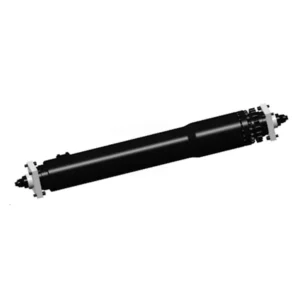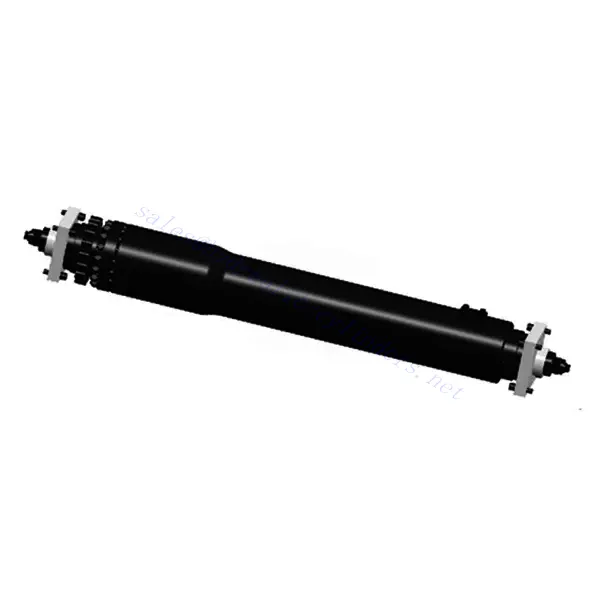Press Return Cylinder
Üheks hüdrosilindrite tootjaks, tarnijaks ja mehaaniliste toodete eksportijaks pakume hüdrosilindreid ja paljusid teisi tooteid.
Palun võtke meiega ühendust üksikasjade saamiseks.
Post:sales@hydraulic-cylinders.net
Tootja tarnija eksportija hüdrosilindrid.
Press Return Cylinder

The press return cylinder is a vital component in optimizing pressing operations in various industries. With its advanced features and reliable performance, this cylinder offers enhanced efficiency, accuracy, and safety.
The press return cylinder is valuable for enhancing efficiency, accuracy, and safety in pressing operations. With its robust construction, precise positioning, efficient return, and integrated safety features, this cylinder empowers you to achieve superior results. By following the recommended usage methods and maintenance practices, you can maximize your pressing operations’ performance, productivity, and lifespan. Choose the press return cylinder to streamline critical processes and elevate operational excellence.
Press Return Cylinder Key Characteristics:
- Vastupidav konstruktsioon:
- The press return cylinder is constructed using high-quality materials, ensuring durability and longevity.
- Its robust design can withstand heavy loads and harsh operating conditions, providing reliable performance in demanding industrial environments.
- Precise Positioning:
- This cylinder offers precise positioning control, allowing for accurate alignment of the press return mechanism.
- Its exceptional accuracy ensures consistent and reliable positioning, minimizing the risk of errors or misalignments.
- Efficient Return:
- The press return cylinder enables the swift and efficient return of the press mechanism to its starting position.
- Its powerful hydraulic system facilitates rapid movement, reducing idle time and increasing overall productivity.
- Safety Features:
- This cylinder incorporates safety features such as pressure relief valves and emergency stop mechanisms.
- These safety features help protect the press and the operator, preventing accidents and minimizing the risk of damage.
Press Return Cylinder Parameter:
| Product Name | Hydraulic Press Return Cylinder |
| Features: | Provide return force for main cylinder and side cylinder, divided into plunger type/piston type |
| Bore diameter: | 180mm~410mm |
| Rod diameter: | 120mm~360mm Stroke≤4500mm |
| Thrust force: | Maximum 2612KN (Bore diameter: 410mm/pressure31.5MPa) |
| Plunger: | 140mm~360mm Stroke≤3000 mm |
| Plunger Thrust force: | Maximum 3206KN (Plunger 360mm/pressure31.5MPa) |
| Hydraulic Press Return Cylinder Applications: | Hydraulic Press |
Piston
Rod diameter: 120mm~360mm
Stroke≤4500mm
(Bore diameter: 410mm/pressure31.5MPa)
Plunger
Stroke≤3000 mm
(Plunger 360mm/pressure31.5MPa)
Press Cylinder Factory:

Usage Method Of Press Return Cylinder:
- Installation and Integration:
- Mount the press return cylinder securely onto the press frame or designated mounting area.
- Ensure proper alignment and connection, following the manufacturer’s guidelines and recommendations.
- Hydraulic Connections:
- Connect the press return cylinder to the hydraulic power unit using appropriate hydraulic hoses and fittings.
- Verify that the hydraulic connections are secure and leak-free to ensure efficient fluid transfer and safe operation.
- Positioning Adjustment:
- Adjust the positioning of the press return cylinder according to the specific requirements of your pressing application.
- Follow the manufacturer’s instructions to set the desired starting and return positions for optimal performance.
- Operational Controls:
- Familiarize yourself with the operational controls provided by the press return cylinder.
- Understand how to initiate the return movement and additional features, such as speed control or emergency stop functions.
What Law Of Hydraulics Does The Brake System Use?
The brake system in vehicles typically utilizes Pascal’s law of hydraulics. Pascal’s law states that when pressure is applied to a confined fluid, the pressure is transmitted equally in all directions. In the context of a hydraulic brake system, this principle allows for force transmission from the brake pedal to the brakes themselves.
Here is a simplified explanation of how the brake system utilizes Pascal’s law:
- Brake Pedal Application:
- When the driver presses the brake pedal, a mechanical force is applied to the master cylinder.
- Master Cylinder:
- The master cylinder contains a piston that moves in response to the force applied by the brake pedal.
- As the piston moves, it exerts pressure on the brake fluid contained within the master cylinder.
- Transmission of Pressure:
- Pascal’s law comes into play at this point.
- The pressure created by the movement of the piston is transmitted equally throughout the brake fluid in all directions.
- Hydraulic Lines:
- The brake fluid, under pressure, flows through hydraulic lines or brake pipes.
- These lines connect the master cylinder to the brake calipers or wheel cylinders at each wheel.
- Brake Calipers/Wheel Cylinders:
- The brake calipers (in disc brakes) or wheel cylinders (in drum brakes) receive the pressurized brake fluid at each wheel.
- The pressure causes the calipers or cylinders to exert force on the brake pads or shoes, which press against the brake rotors or drums.
- Friction and Braking Action:
- The friction between the brake pads and rotors (or shoes and drums) slows down or stops the vehicle’s wheels.
Tehase võimekus ja suutlikkus:
(1) Kokkupanek
Meil on esmaklassiline sõltumatu teadus- ja arendustegevuse montaažiplatvorm. Hüdrosilindrite tootmistöökojas on neli poolautomaatset tõstesilindrite koosteliini ja üks automaatne kallutussilindrite koosteliin, mille kavandatud aastane tootmisvõimsus on 1 miljon tükki. Spetsiaalsete silindrite töökoda on varustatud erinevate spetsifikatsioonidega poolautomaatse puhastusmontaažisüsteemiga, mille kavandatud aastane tootmisvõimsus on 200 000 ja mis on varustatud kuulsate CNC-töötlemisseadmete, mehaanilise töötlemise keskuse, suure täpsusega silindrite töötlemise eriseadmete, robotkeevitusmasina, automaatse puhastusmasina, automaatse silindri kokkupanemise masina ja automaatse värvimise tootmisliiniga. Olemasolevad kriitilised seadmed rohkem kui 300 komplekti (komplekti). Seadmete ressursside optimaalne jaotamine ja tõhus kasutamine tagavad toodete täpsusnõuded ja vastavad toodete kvaliteedinõuetele.


(2) Töötlemine
Töödeldav töökoda on varustatud kohandatud kallutatud rööpse treipingi keskuse, mehaanilise keskuse, kiire lihvimismasina, keevitusroboti ja muude seotud seadmetega, mis suudavad töödelda silindritorusid, mille maksimaalne siseläbimõõt on 400 mm ja maksimaalne pikkus on 6 meetrit.

(3) Keevitamine

(4) Värvimine ja katmine
Väikese ja keskmise suurusega silindri automaatse veepõhise värvipinnakattega liinide abil, et saavutada automaatne robotlaadimine ja mahalaadimine ning automaatne pihustamine, projekteerimisvõimsus 4000 tükki vahetuse kohta;
Meil on ka poolautomaatne suurte balloonide värvimise tootmisliin, mis töötab jõukettaga ja mille projekteerimisvõimsus on 60 kasti ühe vahetuse kohta.


(5) Testimine
Meil on esmaklassilised kontrolliseadmed ja katsestendid, et tagada silindri jõudlus vastavus nõuetele.

We are one of the best hydraulic cylinder manufacturers. We can offer comprehensive hydraulic cylinders. We also provide corresponding põllumajanduslikud käigukastid. Oleme eksportinud oma tooteid klientidele üle maailma ja teeninud hea maine tänu meie suurepärasele tootekvaliteedile ja müügijärgsele teenindusele. Me tervitame kliente kodus ja välismaal, et võtta meiega ühendust, et pidada läbirääkimisi äri, vahetada teavet ja teha meiega koostööd!
Tehke ekskursioon meie VR-tehases:
Tehke ekskursioon meie VR-tehases koos järgmisega
Kuidas töötab kahveltõstuki hüdrosilinder?
Hüdrosilindri kasutamine:


